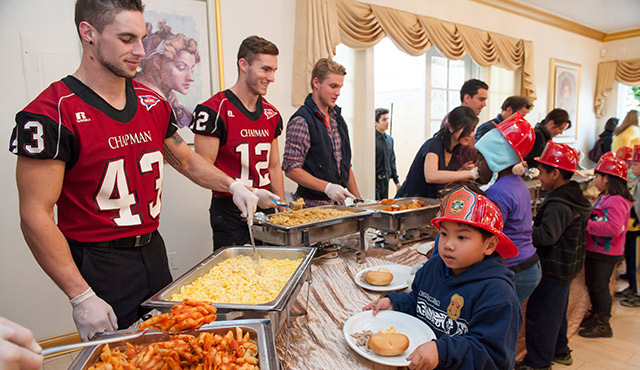With the Eucharist as the Church’s central act of worship—the gathering around the table of the Lord—it’s natural that food and faith have been intertwined into the social, traditional and spiritual tapestry that is Catholicism. Food is a delectable extension of faith and tradition. It brings families, communities and cultures together, and naturally adds joy to the Catholic experience.
Catholicism’s relationship between faith and food has been going strong for centuries, and it remains so today, thanks in part to the popularity of digital media. For instance, Jeff Young, the founder of “The Catholic Foodie” blog and podcast, talks about “growing faith around the table” while sharing an impressive variety of recipes.
“God created us to seek communion, with himself and with others,” Young shares on his blog. “And one of the primary ways we experience communion is around the table – the table of the Eucharist at Mass, and also the family dinner table at home… The recipes on the website are a great resource, but my main goal is to inspire and encourage families to get back into the kitchen and around the table.”
The movement known as Grace Before Meals is another source of inspiration. Founded by Father Leo Patalinghug, Grace Before Meals brings families back to the dinner table – and away from distractions such as digital games, social media and TV.
“Grace Before Meals is centered on one fundamental concept,” writes Father Leo. “The simple act of creating and sharing a meal can strengthen all kinds of relationships. The movement uses three tools: simple, tasty recipes, ideas for talking together and prayers to bring God to the table.” Food is the element that naturally creates stronger relationships and stronger faith, in Orange County and throughout the world.
Every March 17, the Irish Feast of St. Patrick, for instance, is celebrated with shepherd’s pie, corned beef and cabbage, and Irish soda bread. On the Feast of St. Brigid, which honors the patron saint of cattle and dairy every Feb. 1, many Irish bake oatcakes. In Mexico, the Dec. 12 Feast of Our Lady of Guadalupe, which celebrates the appearance of the Virgin Mary to a Native American man during the first years of Spanish rule, includes the serving of three traditional dishes: spinach soup with macaroni, chicken in spiced sauce and Mexican Christmas cookies.
The Italian Feast of St. Joseph honors the saint who at one time brought rain to Sicily during the Middle Ages, ending a terrible drought. Taking place on March 19, the revelry includes the serving of fava beans, as well as specially prepared cakes, breads and cookies, as well as other meatless dishes. And while Thanksgiving is not Catholic in origin, the celebration includes hearty servings of gratitude, charity, family, faith and community – not to mention the traditional turkey, stuffing and cranberry sauce.
It’s easy for families to create their own traditions that tighten the food/faith bond. These traditions are limited only by the space for recipe books and one’s own imagination. For example, an Irish-American family can create its own St. Patrick’s Day celebration by including a side of corned beef and cabbage, followed by green-frosted cupcakes for dessert. During the meal, they can discuss Ireland’s foremost patron saint, and how his life and teachings are relevant today.
Or families can make it an annual tradition to help provide food to those less fortunate every Easter Sunday and Thanksgiving. The food is an element behind their good works, and what begins as a holiday tradition frequently evolves into a weekly family event rooted in giving.
Bruno Serato, the chef/owner of the popular Anaheim White House restaurant, knows a thing or two about giving. For years, he’s effectively blended his faith and his food in a big way: by feeding hungry kids…lots of hungry kids.
Serato is the only chef in the world who feeds 500 children every day, seven days a week, as part of his charity Catarina’s Club, named for his mother, according to The Huffington Post. And he spends an estimated $6,000 to $7,000 a month for the honor.
“Food has always been closely related to the Catholic faith,” he says. “We as Catholics should always provide food to people in need.
“Our holidays are always related to family and food. And Catholic families traditionally eat at the table together and share love, food and faith.”

